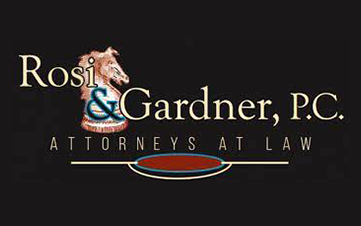In real estate, “landlocked” refers to a piece of property that has no direct access to a public street. The only way on or off the property is across land owned by someone else. Usually, landlocked property gains street access through a legal permission called an easement, but not always.
Scenario One: Smith owned Whiteacre, which is a long narrow strip of land bounded on one end by a public road. On another side it is bounded by water. Two edges – one end and one side are bounded by land owned by a third party. Intending to eventually subdivide the property and put in a common road, Smith had the strip surveyed and divided into several lots, each with a separate tax number.
Smith did not pay the taxes on the lot furthest from the road. Jones bought this lot at a tax sale. Jones now wants to obtain an easement by necessity,
An easement by necessity is similar to an easement implied by prior use. It is generally created only when a landowner divides his or her land among two or more owners, resulting in one parcel having no direct access to a public street.
But what happens when the division and conveyance is not the result of an affirmative act of the initial owner (Smith)? To establish an easement by necessity, the claimant must prove all of the following:
- Severance of unity: the initial owner has divided the land and transferred part of it to the claimant.
- Loss of access: the division caused the claimant‘s parcel to no longer have a legal right of access to a public street.
- Necessity: at the time the property was severed, the claimant’s land didn’t border a public street or have any other existing easement over private land to get to a public street.
If Jones can prove all three of those elements, some courts will interpret that to mean that Smith must have intended to give or reserve an easement across the other part of the subdivided land to get to the public street. Points two and three might apply to this situation, but is the loss of ownership as the result of tax foreclosure the same as a division and transfer of that lot by the original owner?
What if Jones can reach the lot by water? Some courts have ruled that an easement is necessary even if there is some other route to a public street, if that means of access is not feasible or effective. Other courts have held that the easement will not be given if there is no evidence that the original owner had any intent to create such an easement.
Scenario Two: the owner of the family farm, Blackacre, sells off parcels over time leaving an undeveloped lot in the middle for his family. The family lot is surrounded by the lots that he sold. Historically, access to the middle parcel had been over a “two-track” road.
In an effort to avoid high-priced lawyers, the owner signed several deeds for the lots he sold without mentioning the two-track in any of them. When the purchaser of the lot over which the two-track passed put up a barrier, should one expect that a court will say that the original owner intended to reserve to himself an easement over that parcel?
Maybe “Yes” but maybe “No.” Landlocked parcels, easements by necessity, and the law of easements generally are not simple matters. If you have a landlocked parcel, or are considering buying one, can you be sure that a court will give you access to that parcel, over the land of another? It has been said that very few things in life are certain, and easements are not one of the generally-accepted categories . . .
Rosi & Gardner, P.C.
Latest posts by Rosi & Gardner, P.C. (see all)
- Is Collaborative Divorce the Right Choice for You? Exploring a Path to Amicable Separation - November 29, 2023
- Choosing Harmony: Why Opt for Collaborative Divorce Over Traditional Divorce - August 30, 2023
- Benefits of Mediated Divorce - May 24, 2023
